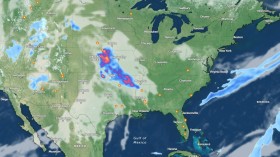Researchers have found that shale-gas extraction across the globe is severally outpacing an understanding of the industry's environmental impact. Because of this, explores claim that the industry is "fracking in the dark," choosing locations for extraction without considering all the environmental consequences.
According to a study recently published in the journal Frontiers in Ecology and the Environment, shale-gas production is expected to surge in the next three decades, resulting in a widening of the gap between scientific understanding of fracking consequences and the industry's influence on the Earth.
"We can't let shale development outpace our understanding of its environmental impacts," co-author Morgan Tingley said in a recent statement. "The past has taught us that environmental impacts of large-scale development and resource extraction, whether coal plants, large dams or biofuel monocultures, are more than the sum of their parts."
And this is certainly true. Nature World News reported just last week how consequences of the industrial revolution even reached the South Pole decades before humanity did.
In this latest study, researchers scrambled to better understand the long-term contributions fracking makes to air, water, noise and even light pollution.
"Think about the landscape and its habitats as a canvas," explained Viorel Popescu, a co-author of the study. "At first, the few well pads, roads and pipelines from shale development seem like tiny holes and cuts, and the canvas still holds. But if you look at a heavily developed landscape down the road, you see more holes and cuts than natural habitats. Forests or grasslands that were once continuous are now islands fragmented by a dense web of roads, pipelines and well pads. At what point does the canvas fall apart? And what are the ecological implications for wide-ranging, sensitive species such as caribou or grizzly bears?"
And that's not even considering the more extensively studied direct impacts of fracking - potential ground water contamination, root degradation and soil erosion.
Amazingly, information is so lacking that in a chemical assessment of 150 wells in three top-gas producing American states, the researchers found that two out of three wells were fractured with at least one undisclosed chemical, and some used 20 chemicals or more.
The authors concluded that to truly see the whole metaphorical canvas, all the data must be provided, and that's something that governments and the industry must ensure. Otherwise, they will just keep "fracking in the dark" at the cost of the Earth's well being.
© 2024 NatureWorldNews.com All rights reserved. Do not reproduce without permission.


![Roundworms with Short Memories 'Stop Forgetting' When Frozen or Given Lithium [Study]](https://1471793142.rsc.cdn77.org/data/thumbs/full/70295/280/157/50/40/roundworms-with-short-memories-stop-forgetting-when-frozen-or-given-lithium-study.jpg)


